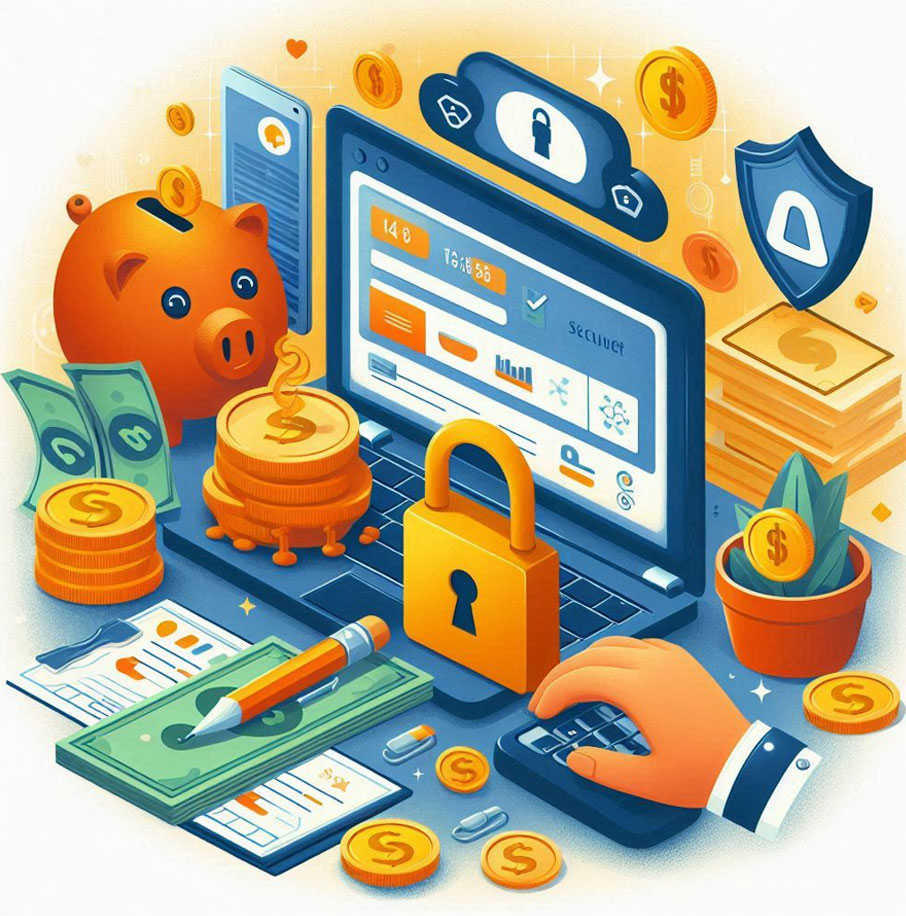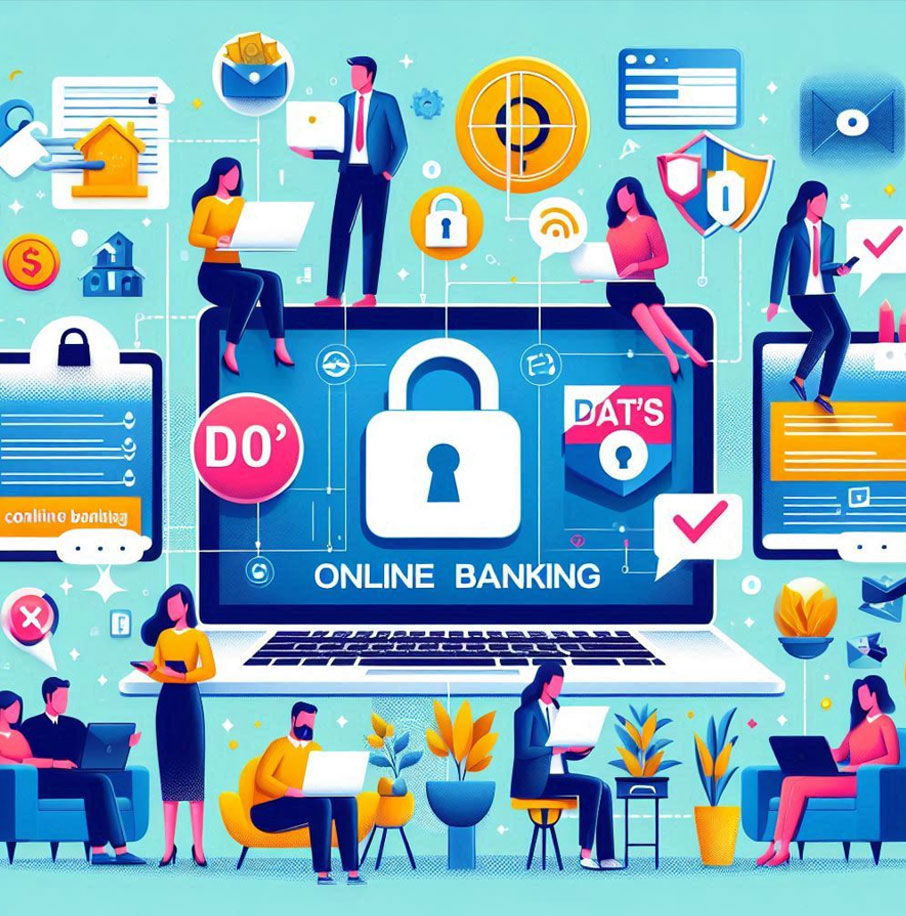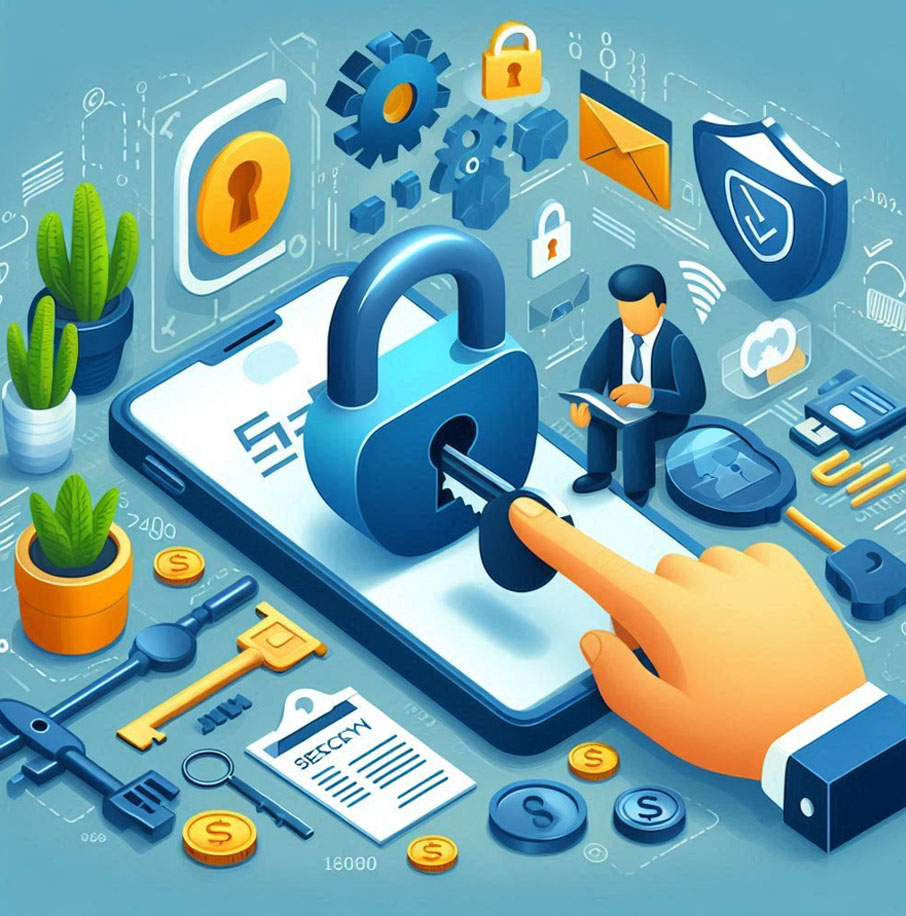Protect Online Bank Account : 10 Essential Tips
Cyber Threats Are Real – Shield Your Bank Account with These 10 Tips!

In today’s digital world, online banking has made managing finances easier and more convenient. However, as digital transactions increase, so do cyber threats. Hackers, phishing scams, and identity theft can put your hard-earned money at risk. To safeguard your online bank account, follow these 10 essential security tips.
1. Use Strong and Unique Passwords to Protect Online Bank Account
A weak password is an open invitation for hackers. Create a strong password using a combination of uppercase and lowercase letters, numbers, and special characters. Avoid using personal information like birthdays or names. Regularly update your passwords and never reuse them across multiple accounts.
2. Enable Two-Factor Authentication (2FA)
Two-factor authentication (2FA) adds an extra layer of security to protect online banking. With 2FA enabled, logging in requires both your password and a verification code sent to your mobile device or email. This significantly reduces the risk of unauthorized access.
3. Be Wary of Phishing Scams
Cybercriminals use phishing emails and fake websites to trick users into revealing sensitive information. Always verify the sender’s email address and avoid clicking on suspicious links. Never share your banking credentials over email or phone unless you are certain of the recipient’s authenticity.
4. Keep Your Devices Secure To Protect Online Bank Account
Ensure that your smartphone, laptop, and other devices have the latest security updates and patches. Install a reputable antivirus program and enable firewall protection. Avoid downloading apps or software from untrusted sources.
5. Avoid Public Wi-Fi for Banking Transactions
Public Wi-Fi networks are often unsecured, making them vulnerable to hackers. Always use a secure, private network when accessing your online bank account. If necessary, use a Virtual Private Network (VPN) to encrypt your connection.
6. Monitor Your Bank Account Regularly
Regularly check your bank statements and transaction history for any unauthorized activities. Most banks offer real-time alerts for transactions. If you notice any suspicious activity, report it immediately to your bank.
7. Use Secure Banking Apps To Protect Online Bank Account
Only use official banking apps downloaded from trusted sources like the Google Play Store or Apple App Store. Avoid third-party apps that claim to offer banking services. Keep your banking app updated for the latest security enhancements.
8. Log Out After Every Session
Always log out of your online banking account after each session, especially on shared or public computers. Clearing browser cookies and cache adds an extra layer of security.
9. Be Cautious of Unsolicited Calls and Messages
Scammers often pose as bank representatives to trick users into revealing sensitive information. Never share your PIN, OTP, or passwords over the phone or email, even if the caller claims to be from your bank.
10. Set Up Account Alerts
Most banks offer SMS and email alerts for every transaction. Enable these notifications to stay informed about all activities in your account. Immediate alerts help detect fraudulent transactions quickly.
Final Thoughts
Protecting your online bank account requires vigilance and proactive security measures. By following these 10 essential online banking security tips, you can minimize risks and keep your finances safe. Stay informed, update your security settings, and always be cautious while handling online transactions.
By implementing these best practices, you ensure safe online banking and financial security against potential cyber threats.




